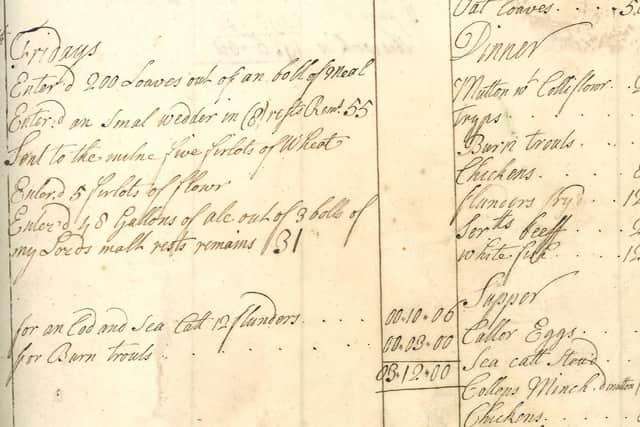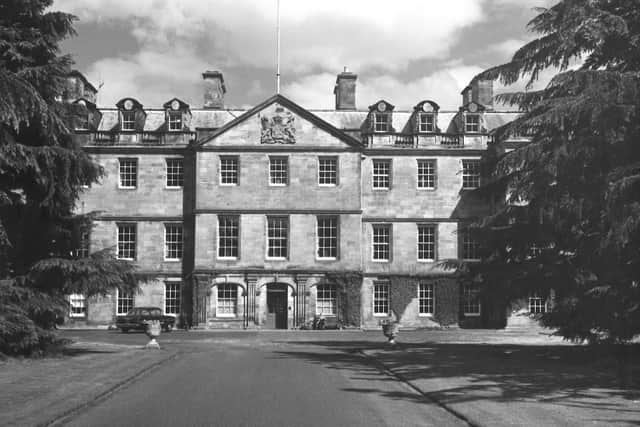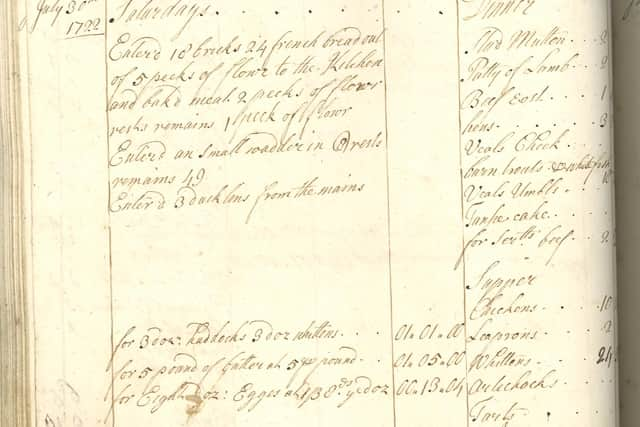18th century Fife diet book reveals eating habits at a stately home
and live on Freeview channel 276
Leslie House, in Glenrothes, was considered second only to the Palace of Holyroodhouse in terms of grandeur but is now in ruins and set to become luxury flats.
It was home to the Earl of Rothes and his family, and in 1720 Robinson Crusoe author Daniel Defoe visited and described the mansion as "the glory of the whole province of Fife .
Advertisement
Hide AdAdvertisement
Hide AdThe house was built from 1667-74 and designed by architect John Mylne Junior but a fire in 1763 caused three of its wings to be demolished, and it later fell into ruins.


An insight into the lives of those who inhabited it in the 1720s has been found in a hand-written diet book kept by kitchen staff, which is being transcribed by volunteers.
Dr Samuel Johnson famously wrote in 1785 that oats "is a grain, which in England is generally given to horses, but in Scotland supports the people" - but the menu book from 60 years earlier proves the Scots diet included extensive choices of seafood and a variety of meats, as well as vegetables.
Servants regularly ate red meat and fish, while opulent meals enjoyed by aristocrats and visitors included "green goose", a term for young goose, and "lapster", or lobster.
Advertisement
Hide AdAdvertisement
Hide AdIt shows seasonal changes in menus and also household tips such as how to store ale for longer.


Family and guests frequently had luxuries including goose, veal, lobster and oysters.
Not only guests and aristocrats ate well, with servants also eating mutton, herrings and salt beef, washed down with home-brewed ale on a daily basis.
A team from OnFife is now transcribing the book, which will be compared to another tome from 1699 to analyse how tastes changed between the Stuart period and the early Georgian era.
Advertisement
Hide AdAdvertisement
Hide AdAndrew Dowsey, archivist, said: "The family, of course, enjoyed more variety than servants, but we're keen to find out exactly how it was better.


"Another key focus will be how the diet changed with the seasons.
"Volunteers have already spotted a proliferation of pigeon in January, which is a familiar Scottish trend."
A list of guests and how long they stayed for was part of the book.
It also includes records of old weights and measures.
Advertisement
Hide AdAdvertisement
Hide AdThe range of fish was extensive including trout, salmon, flounder, cod, haddock, perch, skate and "sea catt" for Atlantic wolffish, while meats including tongue, chicken and pork were listed.
Vegetables including spinach, asparagus and artichokes were also detailed, and dishes such as French ragout and fricassee were referred to, and volunteers are also identifying what food cost and where it was sourced.
One dessert on offer was tansy cake - a sweet, herbal and slightly toxic pancake traditionally served at Easter, and honey berry tart was also on the menu.
There are also plans for an Eat Like an Earl food tasting event – Covid-19 and resources permitting – and to share the findings as widely as possible.